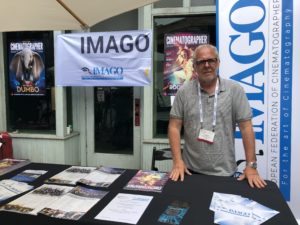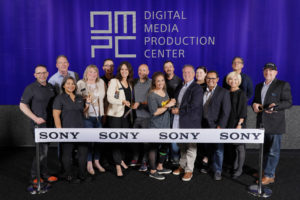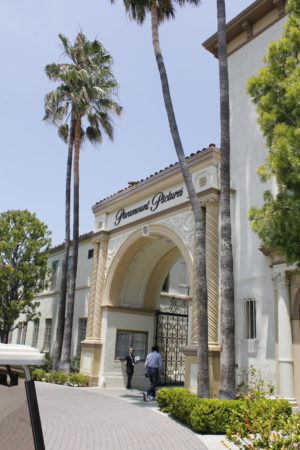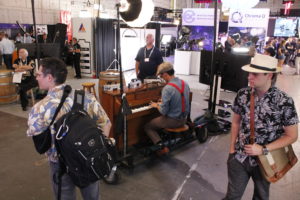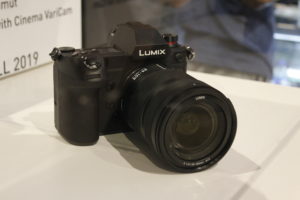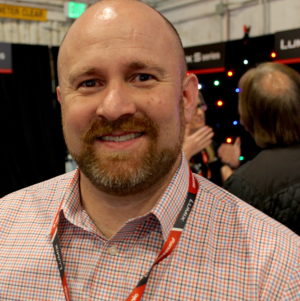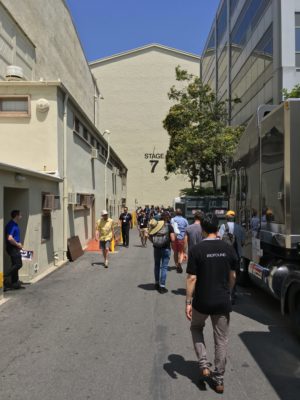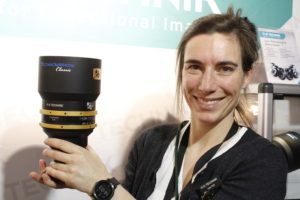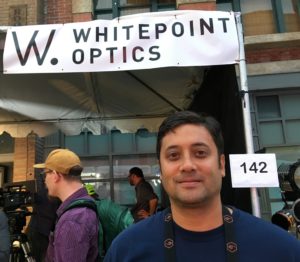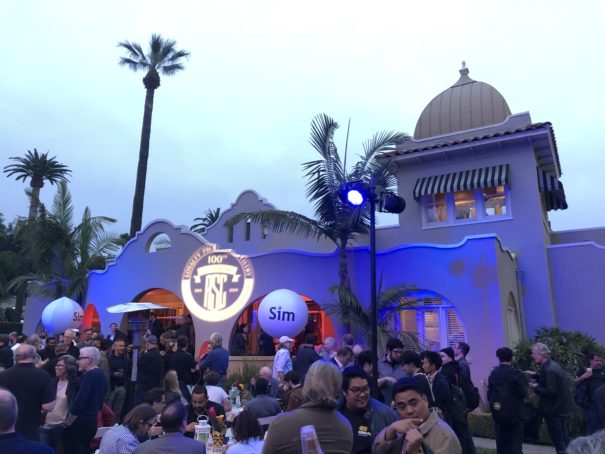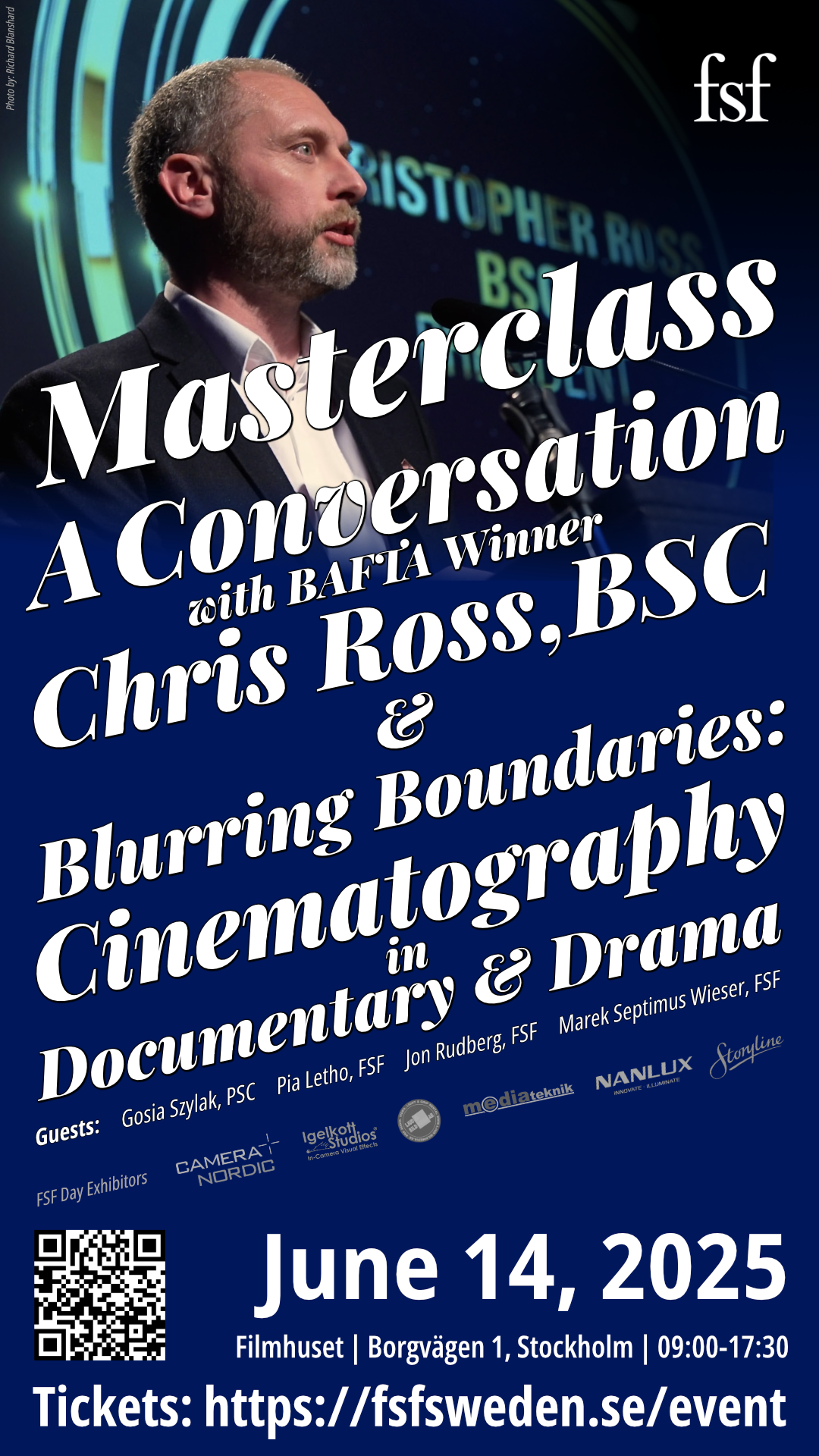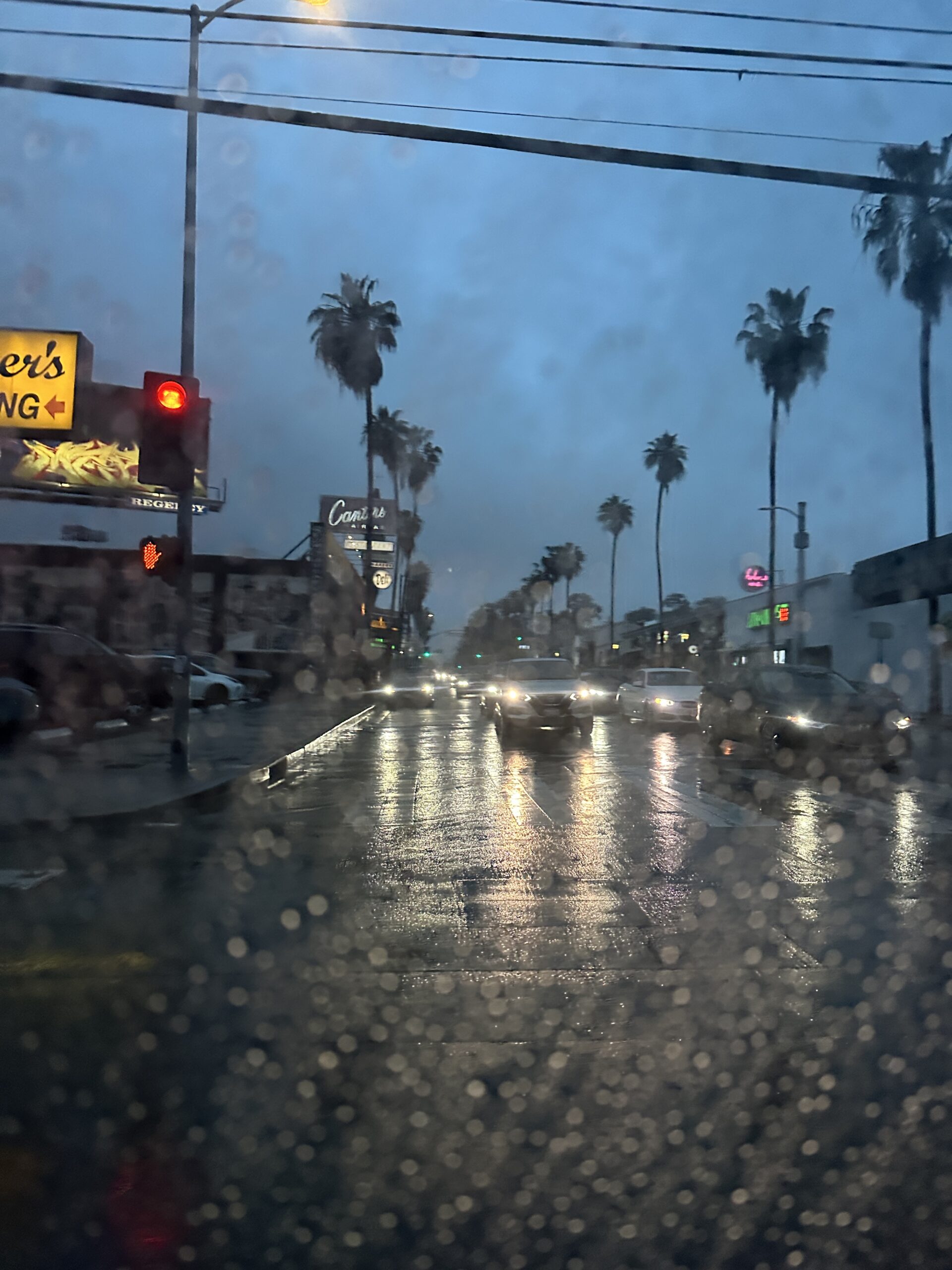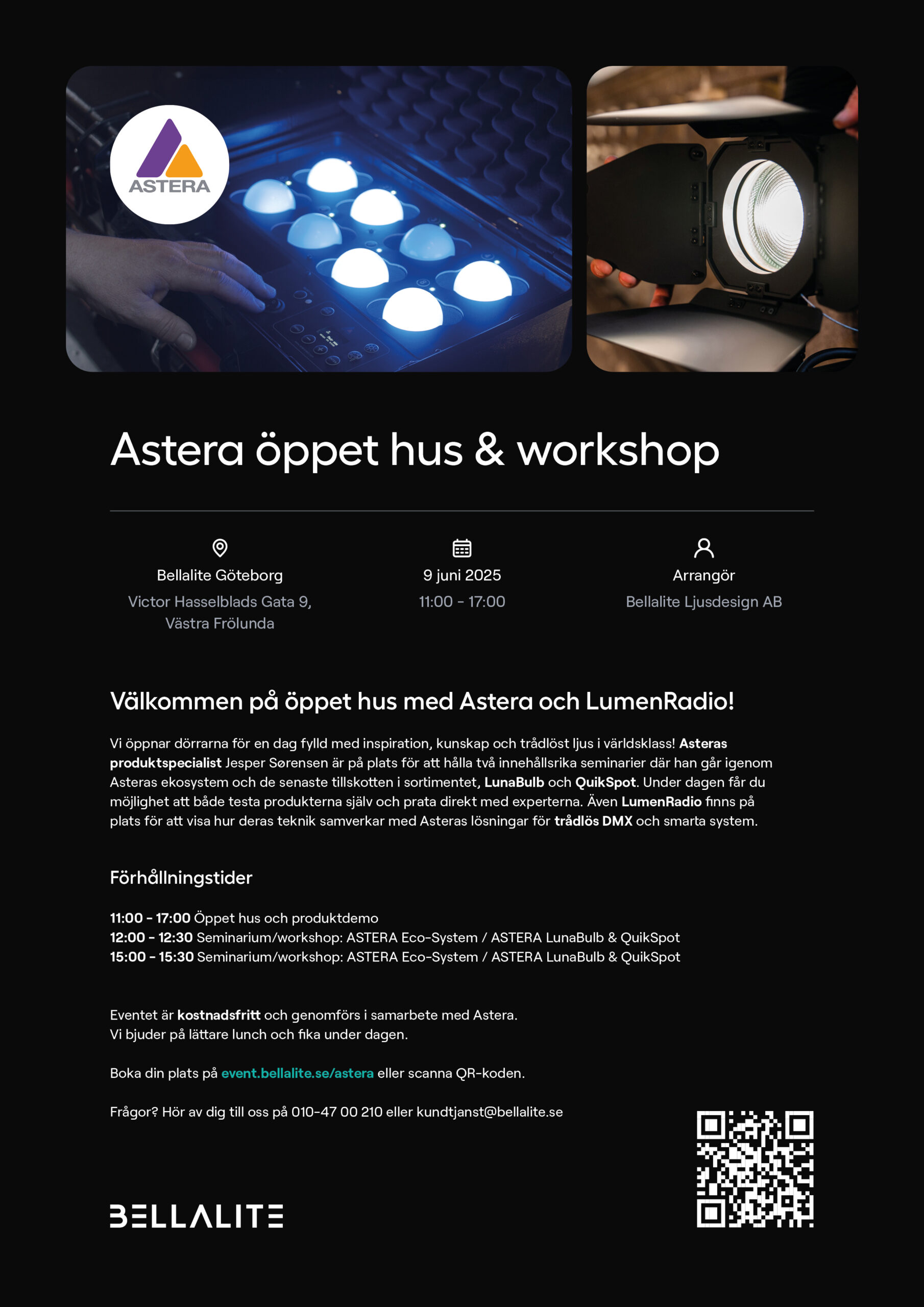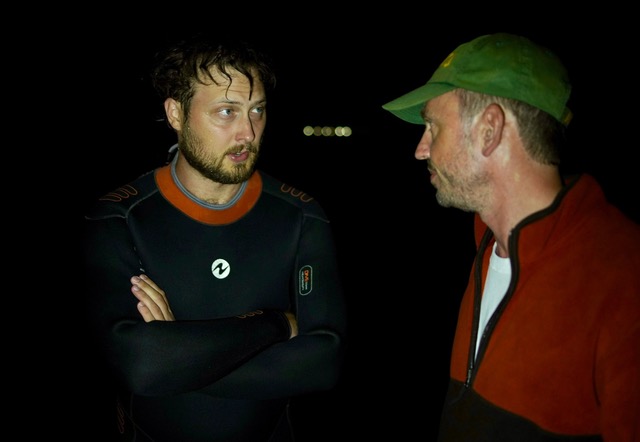The 2019 Cine Gear Expo
Once again Paramount studios was the spectacular backdrop to the 2019 edition of Cine Gear expo, which took place between May the 31st and June 1st. The FSF sent a representative and IMAGO sent its General Secretary Louis-Philippe Capelle to represent the organization and help spread the word about IMAGO’s coming events, like the 2019 ODCC (October 18th, Oslo) and the 2020 IMAGO Awards (March, Brussels).
In preparation for this trip it became obvious that the Cine Gear organizers take their press credentials very seriously -just showing up and doing interviews without a press card could be risky business- so we made sure to apply for one. It would’ve been a bummer to travel halfway across the world only to be escorted off the premises for having violated the press rules.
Happily, it got sorted out, and I soon found myself handing over my passport to the policeman sitting in a booth in front of me at the Stockholm international airport.
”Where are you going?” the policeman wanted to know.
”Los Angeles”, I said.
”Great, great -party, party!” said the policeman(!)
I tried to explain that it was really a serious business trip, but the policeman didn’t seem to believe me and just laughed, so I took that as a very good omen for a trip to Los Angeles!
Anyway, we were far from alone on our errand. Visitors from all over the world are centering on Los Angeles for this event, and some of us arriving slightly ahead of schedule were delighted to find ourselves invited to a few special festivities already on Thursday evening. For instance, RED Studios held a Cinematographer’s Dinner reception at their 857 Lillian Way lot, and they really rolled out the red carpet (pun intended) for their guests, showing us all the tech-goodies at the facility and throwing a wonderful dinner party! As fate would have it, I was seated next to, and wound up having a very interesting conversation with, Carlos Diazmunoz, AMC, president of the Mexican Society of Cinematographers!

Carlos Diazmunoz, AMC, president of the Mexican Society of Cinematographers, at the RED dinner party.
I also learned that Vantage Los Angeles have recently opened a new building showcasing their famous anamorphic and Hawk lenses in the neighborhood of Keslow and Otto Nemenz. Here top lens services in a beautiful environment will be provided for cinematographers, productions and rental houses.
And, by L.A. standards a mere stone’s throw away from RED Studios -or at least a quick cab ride- up by Glassell Park, Sony had also kindly invited us to the grand reopening of their flagship Digital Media Production Center! You can see their A-team cutting the opening ribbon in the photo right here. Cinematographers are invited here to experience an all-Sony imaging workflow from capture through grading to a 23-feet-wide(!) HDR display in just one location. Sony has a number of these DMPCs around the world and several members of the FSF have had a wonderful experience at their Pinewood facility a few years back, so the DMPCs are great for getting hands-on experience with Sony equipment.
Friday morning it was off to the Paramount lot and the almost daunting task of checking out over 300 different exhibitors, spread out over four large soundstages and the world famous Paramount New York Street backlot. It was almost to much for the eye and ear to take in, but what follows are a few brief impressions.
A few words about the amazing historic past of this studio should be in place. Austrian-Hungarian-born Adolph Zukor, born in 1873, was the driving force behind what would eventually become Paramount Pictures. He founded the Famous Players-Lasky Company together with Jesse Lasky back in 1916, and ten years later they moved their business to 5451 Marathon Street, which is actually now well inside the current lot. A year later, in 1927, their company evolved into Paramount Pictures. For a long time, two movie studios were situated side by side here, south of the Hollywood Forever Cemetery: Paramount to the east and RKO Pictures to the west. Paramount absorbed the remains of RKO in 1967 and incorporated it into the studio lot. The modern day studio lot is incredibly large, some 260 000 square metres!
“Citizen Kane” (RKO, 1941) and ”Vertigo” (Paramount, 1958) seem to take turns for the number one spot at the top of many ”Greatest Films Ever Made”-lists. And they were both shot here! And some of the story of Billy Wilder’s ”Sunset Boulevard” (1950) actually takes place on the studio lot, and the locations where the various scenes were shot are easily recognizable to this very day.
However, entering the studio by the van Ness entrance, one of the first imposing structures you pass is the beautiful Paramount Theatre which was built in 1993 -and here Panasonic are holding a big presentation of their very exciting new full-frame camera: the S1H Lumix!
A prototype of the S1H is also on display in their booth in stage 5, and although it has the form factor of a stills camera, it’s clearly aimed at the motion picture industry. It’s capable of shooting at 6K resolution, can handle many different resolutions and aspect ratios, and its lens mount makes it immediately compatible with about 40 lenses that are either readily available, or soon will be, on the market.
The visual performance of the S1H has been harmonized with the bigger siblings in the Panasonic Varicam eco-system, so with a highly affordable 4000 $ price tag, Panasonic are offering this as an entry level model into their products program, and feel assured that those who start using the S1H will want to progress to the larger Varicam models.
Wandering over towards stage 7, one is struck by how gigantic these sound stages are. It’s difficult to describe in words or show in a stills photo how big a Hollywood movie studio really is -or how gigantic the sound stages are -but suffice to say that as you walk towards stage 7 on the Paramount lot, it blocks out the sky. It’s got to be at least 50 feet high. It will give you some idea how big these sound stages are, if you consider the Greenwich Village courtyard Alfred Hitchcock had constructed for ”Rear Window” (1954) which was constructed in stage 18, also known as The deMille Stage, and one of the biggest sound stages on the Paramount lot. The stage wasn’t really high enough for the job, but Hitchcock’s ingenious trick was to utilize what had formerly been an underground furniture storage room below the floor of the stage. This was evacuated, the floor torn away, and the basement floor became the actual ground level in the courtyard, so James Stewart and Grace Kelly’s second-floor apartment was actually on the normal floor level of the sound stage. But apart from that there were few restrictions against constructing a Greenwich Village set that was several stories high, complete with a dozen completely furnished apartments. It was basically a gigantic dollhouse!
Fujinon have a cleverly placed booth which is pretty much the first thing you run into as you enter stage 7. They are introducing two new very fast T 2,9 Premista full-frame zooms, which together cover a great number of focal lengths, thereby replacing the need for a set of primes -not to mention the time saved on fewer lens changes.
Hideyuki Kasai, Product Manager, Fujinon Europe GmbH, kindly takes a few minutes to describe the Premista zooms to us in great detail. The Premistas are able to ”talk to” the Sony Venice through a cable connection in their current incarnation, but very soon this exchange of meta-data will be possible through the lens mount itself! One of the features that Fujinon’s customers have asked for is a smaller front lens diameter, which makes the Premistas compatible with a wide range of matte boxes and accessories -and they are also equally balanced, thereby making it unnecessary to rebalance the camera when changing between two Premista zooms. Fujinon are very pleased with the market reaction to the Premistas and their order books have filled up in a very satisfactory way.
German company P+S Technik were also at Cine Gear. They have added two more primes to their popular series of anamorphic Technovision Classic 1,5* lenses, and are very happy with the way the customers have embraced these two additions to their catalogue.
As mentioned earlier, the organizers of Cine Gear had kindly agreed to let Louis-Philippe Capelle do a short presentation of IMAGO and its aims and ambitions. This was to be held 6.30 Friday evening in screening room 5, which is upstairs in the same building as the Sherry Lansing Theatre -the studio’s next largest auditorium named after Paramount’s legendary female CEO who scored an unprecedented string of successes during her tenure, topping it with the then-highest-grossing-film-of-all-time, James Cameron’s ”Titanic” (1997).
So we made our way there, and being a hopeless movie-projector-nut, I just had to peek into one of the projection booths on the way up the staircase. Thankfully, I wasn’t thrown out but rather given a hearty welcome and a friendly chat with Paramount’s chief projectionist John Hansard, who informed me that -besides all the digital projection wizardry you could possibly want- they had six 35/70mm Phillips DP 70s -though in the US they call them Norelcos- on the studio lot in various cinemas and screening rooms! ”We love our Norelcos”, said John with a smile.

The Sherry Lansing theater. The ingenious gangways mean you can pass between buildings on the third floor.
Anyway, screening room 5 is actually a fairly large auditorium and you can tell by the posh leather seats that producers and movie stars frequent this place. Louis-Philippe gave a presentation explaining what IMAGO is all about and what the organization’s goals are. The audience was interested and appreciative, and after a warm applause some interesting and thoughtful questions were posed during the following Q&A. One was why IMAGO doesn’t publish a magazine like the BSC or ASC do, to which Louis-Philippe responded that the IMAGO Website already pretty much is a magazine -it’s updated frequently, and every two weeks or sometimes every week, IMAGO webmaster Tony Costa sends out the IMAGO newsletter to their entire mailing list, which means thousands of people. It was a very good presentation.
In closing, our Scandinavian friends are also doing well. Aleksis Pillai from the Finnish company Whitepoint Optics had a booth on the New York street backlot. Whitepoint specialize in rehousing classic Hasselblad/Zeiss stills photography lenses, and their products have been received with great enthusiasm by rental houses and cinematographers alike. One of the advantages of these lenses is that they can cover very large sensors or film formats.
And Danish company BB&S have a new ”Dino-light” here at Cinegear. This is the brainchild of Jonas Elmqvist and it’s a variation on the kind of lamp that Vittorio Storaro’s gaffer made back in the 1970s using PAR-lamps, only this is constructed using LED fixtures. It consists of twelve lights in a rectangular configuration and has an output equal to a 10K Tungsten unit, so you can easily balance daylight, for instance. And as we talk another ex-pat Scandinavian shows up, DoP Pär M. Ekberg, FSF. Jonas and Pär go way back as a DoP-gaffer team.
And if Cine Gear starts out each year with a few extracurricular festivities, it just as traditionally goes out with a Bang! Saturday night was rounded off by the traditional ASC Party, held at the society’s clubhouse on North Orange Drive. Since 2019 marks the society’s 100th anniversary, the occasion obviously called for a little extra celebration!
Lars Pettersson, FSF
